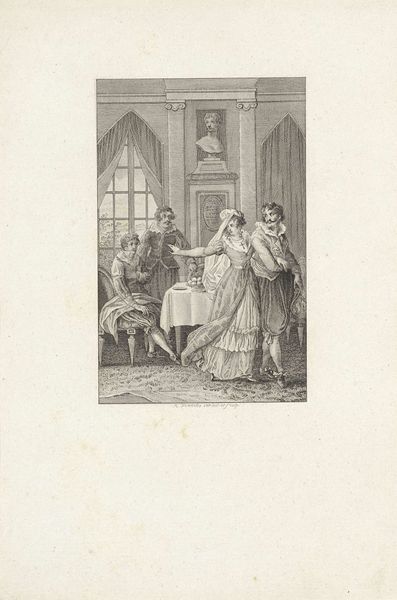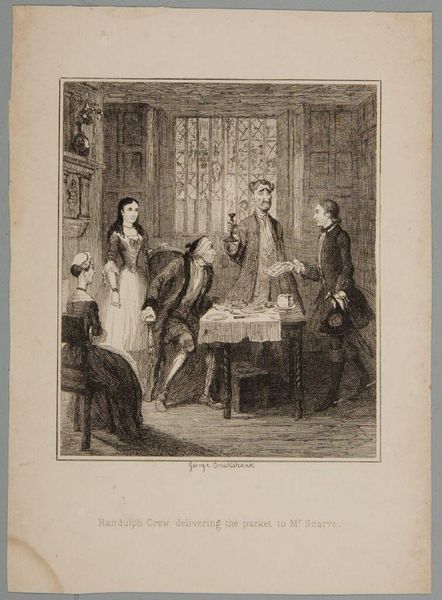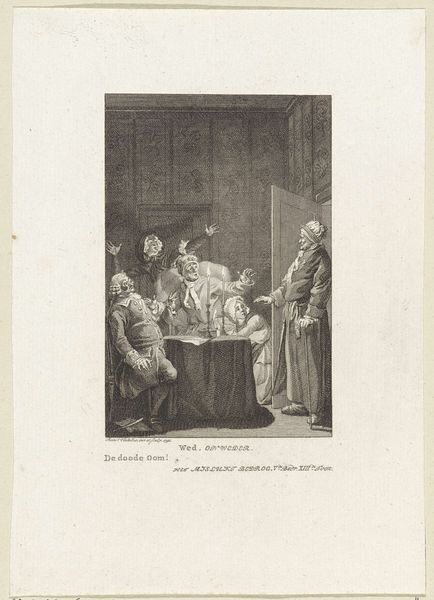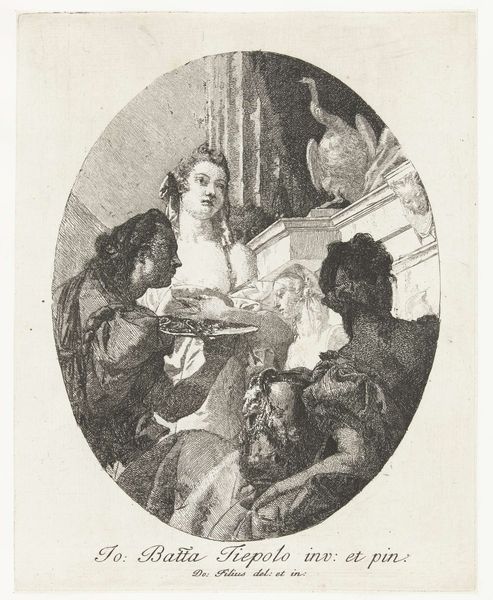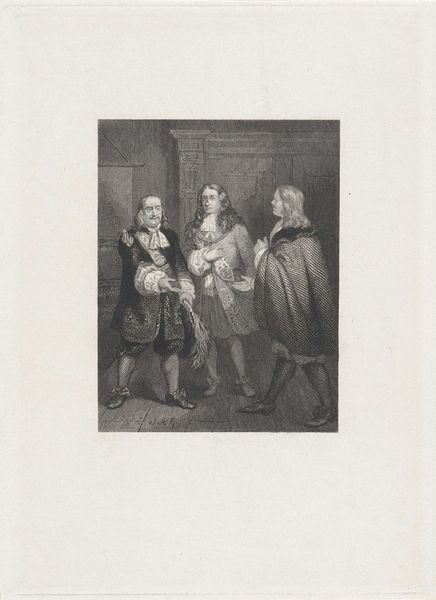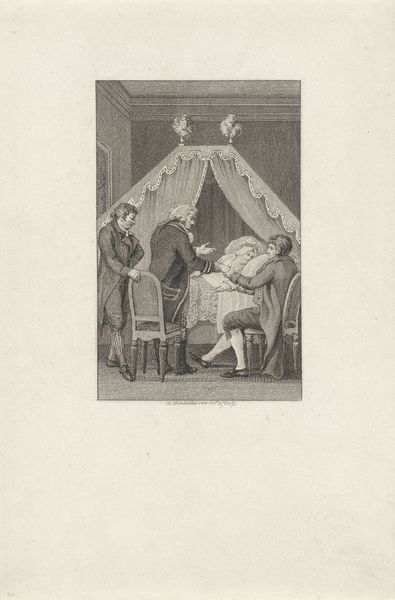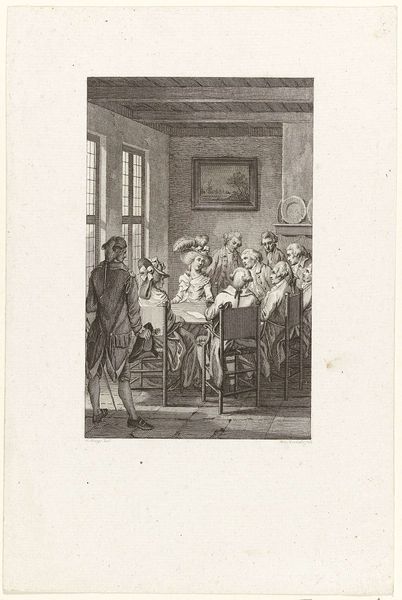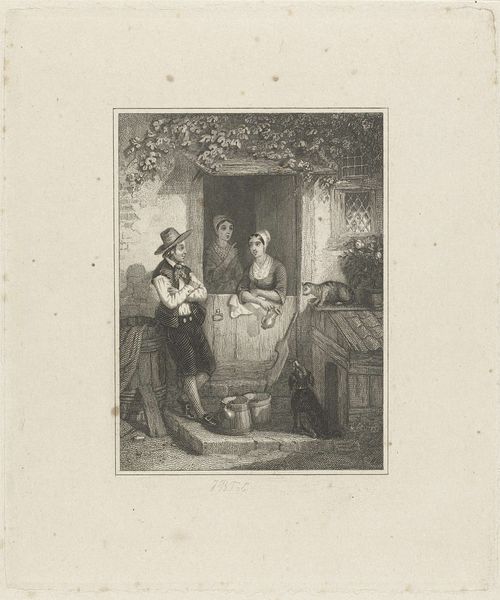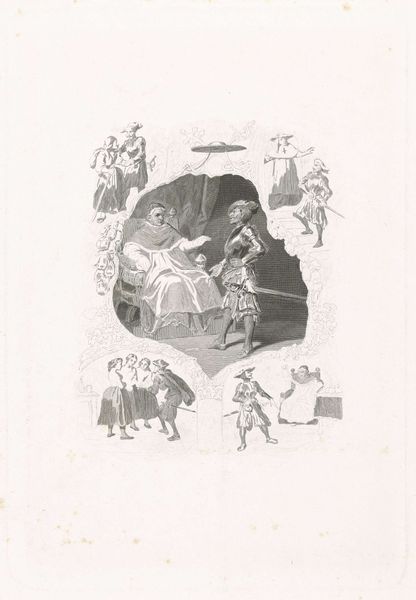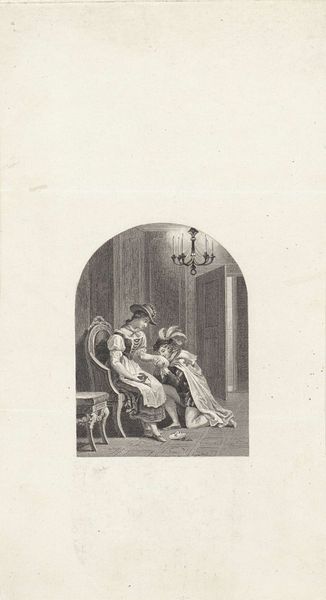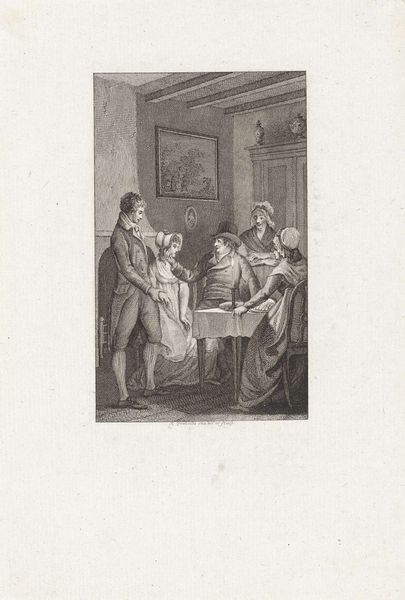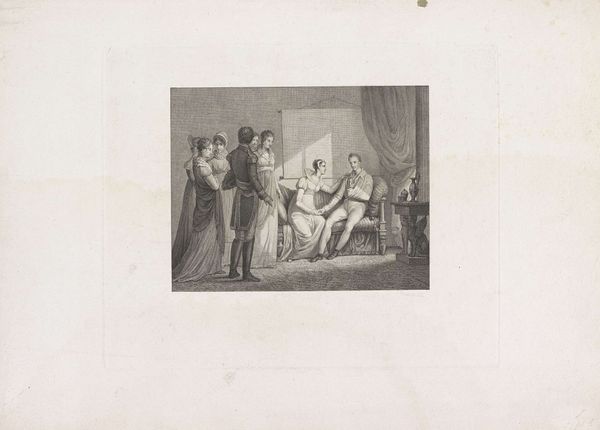
drawing, ink, pencil
#
portrait
#
pencil drawn
#
drawing
#
table
#
narrative-art
#
figuration
#
ink
#
pencil drawing
#
pencil
#
genre-painting
Dimensions: height 245 mm, width 163 mm
Copyright: Rijks Museum: Open Domain
This lithograph by Johannes de Mare portrays three men gathered at a table, their gestures and attire speaking to a narrative beyond the surface. Note the hat hanging on the wall behind them, a subtle yet potent symbol. Hats, throughout history, have signified status, identity, and belonging. In medieval times, hats worn indoors symbolized familiarity. In the 17th-century Dutch Republic, they could indicate profession or political affiliation. Here, removed and hanging, it suggests a temporary shedding of roles, an intermission from the outside world. Consider its presence alongside the domestic scene, a woman watching over the men. This motif echoes in Renaissance paintings, where domestic interiors often serve as stages for human dramas, laden with symbolic objects. It's a cyclical dance of form and meaning, endlessly resurfacing in different guises, reflecting our persistent need to understand our place in the world. This play between interior and exterior, the familiar and the formal, touches something primal within us, a reminder of our own multifaceted selves.
Comments
No comments
Be the first to comment and join the conversation on the ultimate creative platform.
